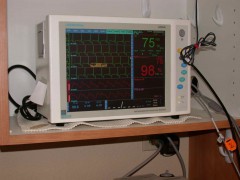We know you want the best for your pet and often pet owners are nervous about taking their pet for a veterinary dental cleaning because they are fearful about their pet being put under anesthesia for the procedure. First, we want to reassure pet owners that under the correct protocols, anesthesia is very safe and is far less dangerous than the periodontal disease that will develop without proper cleanings.
When preparing to take your pet for a veterinary dental cleaning, here are some questions you can ask your veterinarian to give you peace of mind about your pet’s safety and the care you can expect.
Questions about Anesthesia:
- Do you perform laboratory work for my pet prior to anesthesia?
Laboratory work will be recommended by your veterinarian to evaluate your pet’s internal organ function prior to anesthesia. - Who performs and monitors the anesthesia process?
- You should confirm that your pet is monitored under anesthesia by a trained veterinary technician who monitors blood pressure, blood oxygen saturation, end tidal carbon dioxide, electrocardiogram, respiratory rate and body temperature. Intravenous fluids should be administered throughout the procedure to help maintain your pet’s blood pressure and provide intravenous access for additional drugs if they are needed. Your pet should be kept warm with warming blankets during the procedure. Your veterinarian should be happy to discuss every step of the process with you.
- What is your full anesthesia protocol?
You should confirm your pet’s blood pressure and blood oxygen are constantly monitored by a trained veterinary technician, that IV fluids are administered throughout the procedure and pets are kept warm with warming blankets during the procedure. Your veterinarian should be happy to discuss every step of the process with you. - Ask for the practice’s anesthetic safety record. AAHA certified veterinary practices are required to keep anesthesia safety records. You can ask about this record and a practice should be more than happy to share this information with you.
Questions about the dental procedure?
-
Do you take radiographs as a standard practice for all cleanings?
A comprehensive veterinary dental cleaning will include radiographs. This is the only way to identify other painful problems that may exist in your pet’s mouth under the gum, in the bone or involving the tooth root due to periodontal or endodontic disease. - Do you use localized nerve blocks?
Local nerve blocks, in addition to pain medication administered prior to anesthesia, reduces the need for general anesthetic, improving the safety of the procedure and making your pet’s recovery faster and less painful.
- What is your protocol if you identify a problem?
You should ask your veterinarian how they handle disease that they find and if they will discuss the findings and treatment options with you immediately. You may also want to ask how they handle any complex issues they find such as broken teeth, bone loss or other problems. In many cases a specialist can save teeth with root canal procedures as opposed to extraction – keeping teeth intact when possible can prevent future dental problems to a pet.


